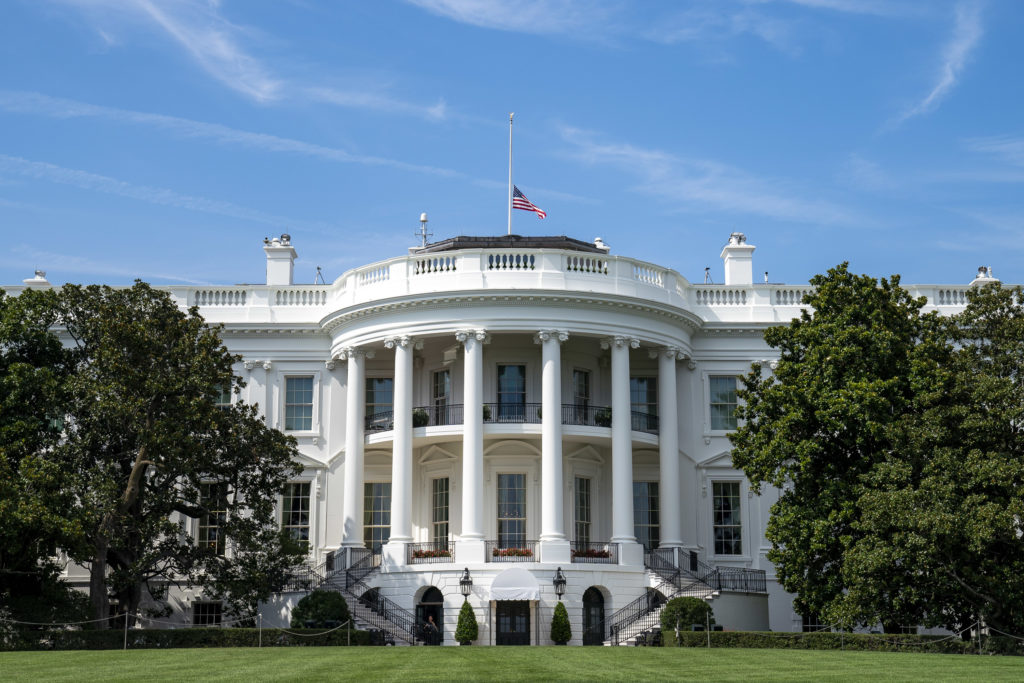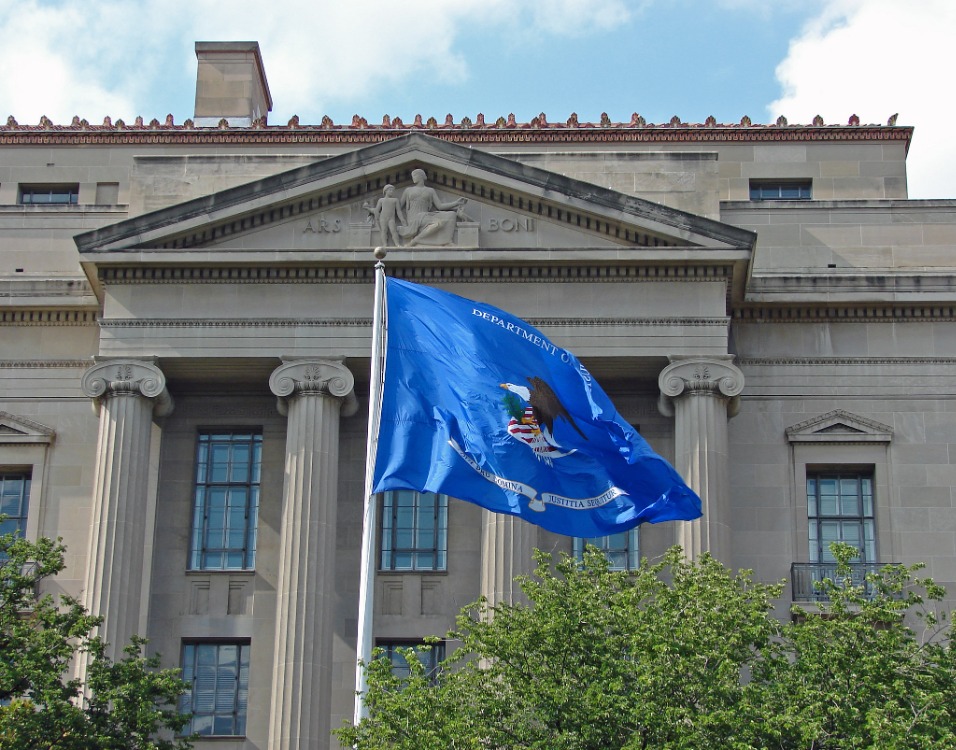What the Supreme Court Got Wrong in the Trump Section 3 Case
The Court botched the legal reasoning and relied heavily on dubious policy arguments.

Published by The Lawfare Institute
in Cooperation With

The Supreme Court’s unanimous recent decision in Trump v. Anderson overturned the Colorado Supreme Court ruling disqualifying Donald Trump from the presidency under Section 3 of the 14th Amendment. It does so on the grounds that Section 3 is not “self-executing.” In a per curiam opinion jointly authored by five justices, including Chief Justice John Roberts, the Court ruled that only Congress, acting through legislation, has the power to determine who is disqualified and under what procedures. This outcome was predictable based on the oral argument , which focused on this issue to the exclusion of virtually all the other questions at stake in the case. But the Court nonetheless got the issue badly wrong.
Sometimes, unanimity is no guarantee of correctness. And the seeming unanimity is belied by four justices’ apparent rejection of much of the majority’s reasoning.
Section 3 states that “No person” can hold any state or federal office if they had previously been “a member of Congress, or … an officer of the United States” or a state official and then “engaged in insurrection or rebellion against the same, or given aid or comfort to the enemies thereof.”
By focusing exclusively on the self-execution issue, the Court left for another day all the other arguments at stake in the Trump case, such as whether the Jan. 6, 2021, attack on the Capitol qualifies as an “insurrection,” whether Trump “engaged” in it, whether his actions were protected by the First Amendment, whether Trump received adequate due process, and whether the president is an “officer of the United States” covered by Section 3. The justices may hope they can avoid ever having to decide these questions.
In my view, Trump deserved to lose on all these points, and the Colorado Supreme Court correctly rejected his arguments on them. But I think he did have a plausible argument on the issue of whether his involvement in the Jan. 6 attack was extensive enough to qualify as “engaging” in insurrection. At the very least, he had a better argument there than on self-execution. The Court’s resolution of the latter issue is based on badly flawed reasoning and relies heavily on dubious policy arguments invoking the overblown danger of a “patchwork” of conflicting state resolutions of Section 3 issues. The Court’s venture into policy was also indefensibly one-sided, failing to consider the practical dangers of effectively neutering Section 3 with respect to candidates for federal office and holders of such positions.
Why the Court Got the Law Wrong
Under the Court’s approach, only Congress has the power to determine which people are to be disqualified and under what procedures—at least when it comes to candidates for federal office and officials holding those offices. The majority claims that Congress’s Section 5 power to enact “appropriate” legislation enforcing the 14th Amendment is the exclusive mode of enforcing Section 3.
There are several flaws in the Court’s analysis. The most basic is that there is no good reason to believe that Section 5 is the exclusive mode of enforcing Section 3. As the Colorado Supreme Court emphasized in its ruling, Section 5 empowers Congress to enforce not just Section 3 but also every other part of the 14th Amendment, including its protections against racial and ethnic discrimination, the Due Process Clause, and more. These other provisions are considered to be self-executing, under long-standing federal Supreme Court precedent. Section 5 legislation is not the exclusive mode of enforcement for these other parts of the amendment.
Thus, state governments and federal courts can enforce these provisions even in the absence of congressional Section 5 enforcement legislation. Otherwise, as the Colorado Supreme Court notes, “Congress could nullify them by simply not passing enacting legislation.” Why should Section 3 be any different? Monday’s Supreme Court decision doesn’t give us any good answer to that question.
As the Supreme Court ruling notes, following its landmark precedent in City of Boerne v. Flores (1997), Congress’s Section 5 power is “remedial” in nature: It must be “congruent and proportional” to violations of the amendment it is intended to remedy. If Section 5 legislation is remedial in nature, including when it comes to enforcing Section 3, that implies some other entity—state governments and federal courts—has the initial responsibility for ensuring compliance with Section 3. The role of Section 5 is to remedy violations of that duty, not to be the exclusive enforcement mechanism.
If anything, such purported congressional exclusivity is even more problematic for Section 3 than for other parts of the 14th Amendment. Section 3 explicitly indicates that Congress may lift disqualifications “by a vote of two-thirds of each House.” There would be little need for that provision if Congress could prevent disqualification simply by not passing implementing legislation or by affirmatively exempting those it wished to protect from any enforcement legislation it chooses to enact. As the three liberal justices—Ketanji Brown Jackson, Elena Kagan, and Sonia Sotomayor—note in their concurring opinion, “[i]t is hard to understand why the Constitution would require a congressional supermajority to remove a disqualification if a simple majority could nullify Section 3’s operation by repealing or declining to pass implementing legislation.”
The per curiam opinion emphasizes the need for uniformity in determining eligibility for federal office and argues that states lack the power to make such determinations:
Because federal officers “‘owe their existence and functions to the united voice of the whole, not of a portion, of the people,’” powers over their election and qualifications must be specifically “delegated to, rather than reserved by, the States.” U. S. Term Limits, Inc. v. Thornton, 514 U. S. 779, 803–804 (1995) …. But nothing in the Constitution delegates to the States any power to enforce Section 3 against federal officeholders and candidates.
This argument ignores the long-standing role of states in enforcing and adjudicating other constitutional qualifications for candidates for federal office, such as the requirements that the president must be 35 years old and a “natural born” citizen of the United States. In 2016, there was litigation over claims brought by Trump supporters to the effect that Sen. Ted Cruz (R-Texas), his chief rival for the GOP presidential nomination, was not a natural born citizen. State courts in Pennsylvania and New Jersey ruled that Cruz was eligible, rejecting the claims against him. But no one doubted that they had the authority to adjudicate the issue.
In a 2012 decision written when he was a lower court judge on the U.S. Court of Appeals for the 10th Circuit, Supreme Court Justice Neil Gorsuch upheld Colorado state officials’ decision to bar from the ballot a would-be presidential candidate who was clearly not a natural born citizen. Then-Judge Gorsuch wrote that “a state’s legitimate interest in protecting the integrity and practical functioning of the political process permits it to exclude from the ballot candidates who are constitutionally prohibited from assuming office.” This reasoning applies to Section 3 just as readily as to the Natural Born Citizen Clause.
U.S. Term Limits v. Thornton, the 1995 precedent relied on by the Court, holds that states cannot impose term limits on members of Congress, because they lack the power to impose additional qualifications for holding federal office, beyond those specified in the Constitution. But that is not what Colorado did here. The state was merely trying to enforce a qualification already in the Constitution (that is spelled out in Section 3), not impose a new one.
U.S. Term Limits was a close 5-4 decision, featuring a strong dissent by Justice Clarence Thomas, in which he argued that states can in fact add additional qualifications for candidates for federal office on their ballots, so long as doing so isn’t specifically forbidden by the Constitution. As Thomas put it, “[n]othing in the Constitution deprives the people of each State of the power to prescribe eligibility requirements for the candidates who seek to represent them in Congress.” Thomas nonetheless joined the per curiam opinion in Trump v. Anderson. Perhaps he did so based on respect for precedent. But the per curiam opinion actually goes further in constraining states than U.S. Term Limits did. The former blocks states from enforcing an existing qualification for office mandated by the Constitution, not just imposing new ones.
The per curiam opinion relies heavily on a distinction between Section 3 disqualifications from state office and disqualifications from holding federal office. It holds that states may potentially apply Section 3 to the former but cannot reach the latter without specific authorization from congressional legislation.
This distinction between state and federal offices is nowhere to be found in the text and original meaning of Section 3. Indeed, as the Court indicates in a footnote, at least one candidate for federal office—John Christy, a former Confederate who had won an election for a Georgia seat in the House of Representatives—was disqualified prior to any congressional enforcement legislation. More such cases could easily have occurred, if not for the fact that in 1872—just four years after the ratification of the 14th Amendment—Congress passed a sweeping amnesty act lifting Section 3 disqualifications for all but a few of those covered by them.
The per curiam opinion also relies on Griffin’s Case, an 1869 ruling by Supreme Court Chief Justice Salmon P. Chase, indicating that congressional legislation is required to enforce Section 3. But, as the three liberal justices note in their concurring opinion, Griffin’s Case was a “nonprecedential, lower court opinion by a single Justice in his capacity as a circuit judge.” In the 19th century, Supreme Court justices routinely heard lower court cases in this way. Rulings that justices issued in that capacity did not speak for the Supreme Court as a whole and were not considered binding precedents that later court decisions are required to follow.
In addition, Chief Justice Chase contradicted his own conclusion from Griffin’s Case in In re Davis, an 1868 circuit court case involving the treason prosecution of former Confederate President Jefferson Davis. There, Chase held that Section 3 precludes proceedings inconsistent with it, despite the fact there had not yet been any enforcement legislation enacted, effectively endorsing Davis’s counsel’s argument that Section 3 “executes itself” and “needs no legislation on the part of congress to give it effect.”
The Overblown Specter of a “Patchwork” of Conflicting State Decisions
The main motive for the Court’s decision seems to have been not purely legal considerations but, rather, practical concerns that letting states adjudicate Section 3 disqualifications will lead to a “patchwork” of conflicting procedures and determinations. The per curiam majority opines that “state-by-state resolution of the question whether Section 3 bars a particular candidate for President from serving would be quite unlikely to yield a uniform answer.” Similarly, the concurring opinion by the three liberal justices invokes the menace of “a chaotic state-by-state patchwork, at odds with our Nation’s federalism principles.” On top of that, some critics of the Section 3 case against Trump have warned that partisan state officials will seek to disqualify opposing-party candidates for specious reasons.
These are at least somewhat legitimate concerns. But they are overblown. If state officials or state courts reach unsound or contradictory legal conclusions about the meaning of Section 3 (for example, by adopting overbroad definitions of what qualifies as an “insurrection” or what qualifies as “engaging” in it), their determinations could be reviewed in federal court, and the Supreme Court could impose a uniform definition of the terms in question. Indeed, it could have done so in this very case. Non-uniform interpretations of provisions of the federal Constitution by state and lower federal courts can and do occur in many contexts. Settling such issues is one of the reasons we have a Supreme Court in the first place. A large part of its docket routinely consists of cases where state supreme courts and federal appellate courts have reached divergent interpretations of one or another federal law or constitutional provision. Section 3 challenges need not be any different.
Perhaps Section 3 cases are special because they are more likely to turn on contested factual claims than litigation over age or “natural born” citizen status. But conflicting factual determinations about candidate eligibility for office can also arise with respect to other constitutional qualifications for the presidency. For example, there might be disputes over the accuracy or validity of a candidate’s birth certificate (recall “birther” claims that Barack Obama wasn’t really born in the United States and that his birth certificate was fake). The same goes for the requirement that the president must have been a resident of the United States for 14 years prior to taking office. There could potentially be factual disputes about where the president lived at any given time.
The possibility of divergent conclusions on such issues is an unavoidable aspect of a system in which control over elections for federal offices is largely left to individual states rather than reserved to a federal government agency. Perhaps the framers of the Constitution made a mistake in structuring the system that way. Maybe it would be better if we had a national agency administering all elections for federal office, like Elections Canada, which fulfills that function in our neighbor to the north.
But the founders chose otherwise. As the per curiam opinion recognizes, “the Elections and Electors Clauses … authorize States to conduct and regulate congressional and Presidential elections, respectively. See Art. I, §4, cl. 1; Art. II, §1, cl. 2.” That gives state governments initial authority (subject to federal judicial review) to enforce other constitutionally required qualifications for federal office. Section 3 is no different. Even if the 14th Amendment does not delegate states any specific authority to enforce Section 3, such power is inherent in the general grant of authority to conduct and regulate presidential and congressional elections already present in Articles I and II.
Concerns about a potential “patchwork” of conflicting state rulings are ultimately policy objections to the Constitution’s decentralized state-by-state scheme of election administration. As the conservative justices (rightly) love to remind us in other contexts, courts are not permitted to second-guess policy determinations that are under the authority of other branches of government or—as in this case—the framers and ratifiers of the Constitution.
If the Court was going to base its ultimate decision in the Trump Section 3 case on a policy consideration, it should have at least also weighed the practical concerns on the other side: the danger of letting insurrectionists return to power and subvert liberal democracy again. That danger is especially acute in a case where the insurrectionist is a candidate for the most powerful office in the land. Moreover, some degree of “patchwork” divergence may be preferable to a uniform-but-wrong resolution of a Section 3 issue by the federal government, or to congressional nullification of Section 3 by inaction.
While the Supreme Court ruling was unanimous, it is notable that both Justice Amy Coney Barrett (writing for herself alone) and the three liberal justices (in a joint opinion) wrote concurrences that seem to reject or at least call into question much of the majority’s reasoning. Barrett writes that she agrees that “States lack the power to enforce Section 3 against Presidential candidates” and suggests the Court should have limited its holding to that point, without ruling that “federal legislation is the exclusive vehicle through which Section 3 can be enforced.” But she fails to explain how the Court could have found a rationale for holding that Section 3 enforcement requires congressional legislation when it comes to presidential candidates that would not apply with equal force to other federal office holders. If the Court’s reasoning on self-execution goes too far, that’s a good reason to reject it entirely.
The three liberal justices also argue the Court’s reasoning goes too far. They correctly emphasize that the majority has “next to no support for its requirement that a Section 3 disqualification can occur only pursuant to legislation enacted for that purpose.” If that is their view, they should have dissented. Or, at the very least, they should have ruled for Trump on some ground unrelated to self-execution. Instead, they concur in the result, relying on U.S. Term Limits and other similar precedents, and emphasize the fear that divergent state decisions might cause practical problems. But, as we have seen, these issues can arise with state adjudications of cases involving other constitutional qualifications for the presidency. Such dangers can be mitigated by federal judicial review, but to some extent are a natural by-product of the framers’ decision to give state governments primary authority over the conduct of elections for federal office.
The Impact of the Court’s Decision
The one good aspect of the Court’s ruling is that it eliminates nearly all remaining uncertainty about whether Trump can assume the presidency if he wins the 2024 election. By holding that Section 5 enforcement legislation is the sole mechanism by which federal officeholders can be disqualified, the decision forestalls such potential scenarios as a Democratic Congress refusing to certify Trump’s election. In theory, Congress could enact new enforcement legislation between now and Jan. 20, 2025 (when Trump would take office, should he win). But that is incredibly unlikely. After Jan. 20, any new enforcement legislation that might threaten Trump would be subject to his veto, and it is almost impossible that Congress would muster the two-thirds majorities in both houses needed to override it.
Some observers suggest the Court’s ruling doesn’t categorically bar Congress from refusing to certify Trump’s electoral votes in the event he wins the election. But I think such a conclusion is implicit in the Court’s repeated emphasis on the idea that Section 5 legislation is the exclusive enforcement mechanism. Refusal to certify electoral votes is not Section 5 legislation, or indeed legislation at all. That said, there may be some residual uncertainty on this point, because the Court does not directly address it.
The price of certainty is that Section 3 is largely neutered with respect to federal office holders. Unless and until Congress enacts new Section 5 enforcement legislation, former officeholders who engaged in insurrection will be mostly free to return to power and try their hand at subverting democracy again. Congress would likely need to enact new legislation to prevent them from taking office. And it is highly unlikely that Congress will enact meaningful enforcement legislation anytime soon.
The Court does suggest that state governments could still disqualify insurrectionists from holding state office, though it stops short of definitively indicating even that. That question may need to be further litigated in the future.
Some insurrectionist federal office holders might be convicted under 18 U.S.C. § 2383, the federal insurrection statute, which the Court’s opinion describes as enforcement legislation under Section 5. But such convictions may be difficult to obtain, especially in the case of those who promoted and aided insurrection indirectly, as Trump did.
In any event, there is no good reason to believe that a criminal conviction is a prerequisite to Section 3 disqualification. As discussed in my amicus brief in the case, any such conclusion is at odds with the text and original meaning of Section 3 and the basic distinction between criminal and civil proceedings in the U.S. legal system.
Perhaps political norms will prevent insurrectionists from being elected to powerful offices in the future. But if norms were that effective, Trump probably would never have been elected to office in the first place, and he certainly would not once more be a leading candidate for the presidency, despite his attempt to use force and fraud to stay in power after losing the 2020 election.
Section 3 is intended to protect liberal democracy against allowing insurrectionists to return to power in situations where norms fail. It is one of a number of constitutional provisions intended to protect democracy and liberal values against catastrophically bad choices by voters. In Trump v. Anderson, the Supreme Court largely gutted that protection on the basis of highly dubious reasoning.





